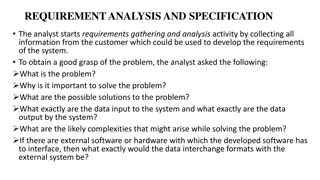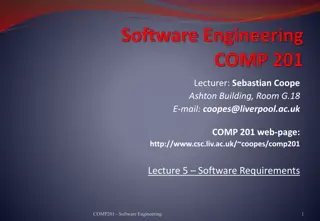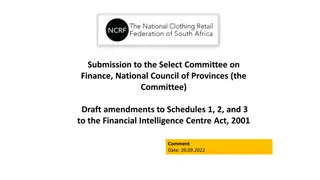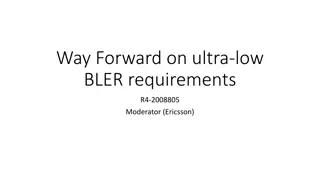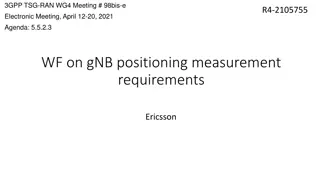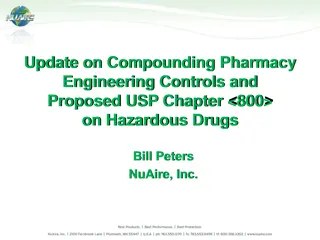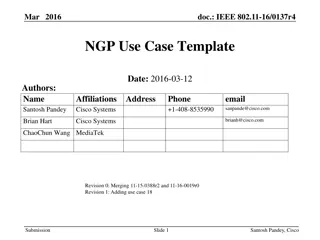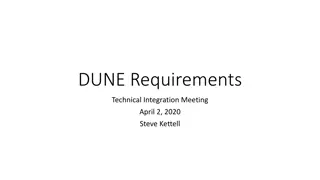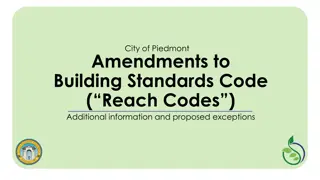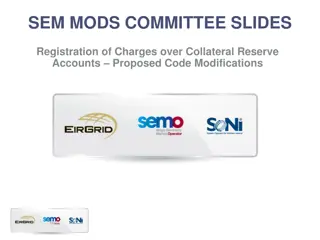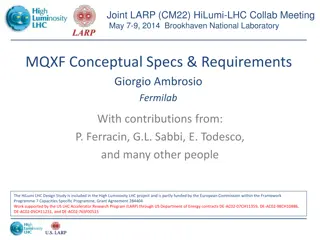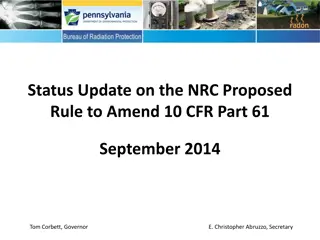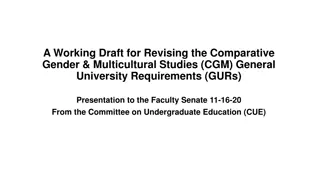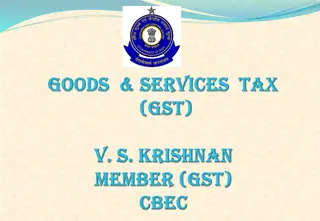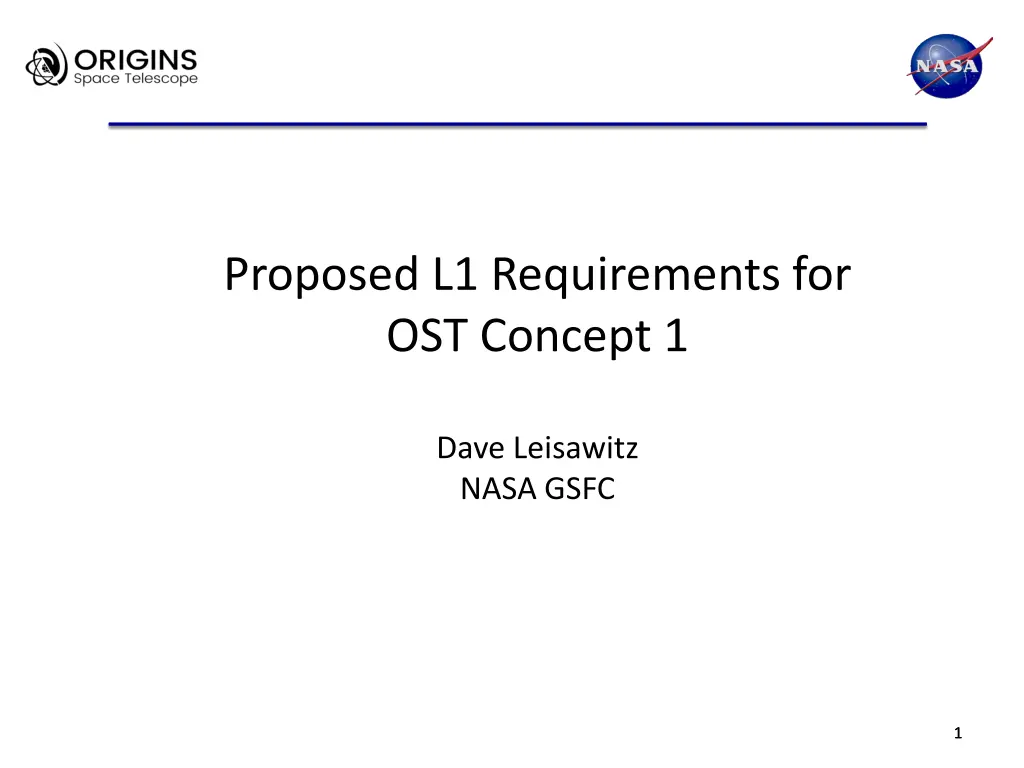
Proposed L1 Requirements for OST Concept by Dave Leisawitz NASA
Discover the prioritized science goals and measurement requirements for the OST Concept 1 proposed by Dave Leisawitz from NASA. Explore the connection between science goals and measurements, focusing on heavy element buildup, galaxy evolution, exoplanet spectroscopy, and more. Stay updated on the latest science priorities for deep space exploration missions.
Download Presentation

Please find below an Image/Link to download the presentation.
The content on the website is provided AS IS for your information and personal use only. It may not be sold, licensed, or shared on other websites without obtaining consent from the author. If you encounter any issues during the download, it is possible that the publisher has removed the file from their server.
You are allowed to download the files provided on this website for personal or commercial use, subject to the condition that they are used lawfully. All files are the property of their respective owners.
The content on the website is provided AS IS for your information and personal use only. It may not be sold, licensed, or shared on other websites without obtaining consent from the author.
E N D
Presentation Transcript
Proposed L1 Requirements for OST Concept 1 Dave Leisawitz NASA GSFC 1 1 1
Why L1 Requirements? State prioritized science goals in concrete terms, connecting goals to measurements Enable traceability from science goals to measurement requirements, instrument parameters, and engineering requirements How many L1 requirements for the mission? TBD 14 June 2017 D. Leisawitz - STDT f2f #5 2 2 2
Tied to updated science priorities 1. Heavy element and dust buildup, and galaxy evolution i. Measure metal-tracing far-IR fine structure lines from >104galaxies to: a) track the cosmic history of heavy element buildup from z = 10 to present-day, and b)constrain the star formation rate density and black hole accretion rate density as a function of redshift out to z ~ 7 to determine the connection between black hole growth and star formation over cosmic time. ii.Measure 3 30 micron rest frame PAH spectral features in at least 100 galaxies in the redshift interval z = 6 to 10 to quantify the dust enrichment history of the universe. iii. Observe far-IR molecular and fine structure spectral lines in at least 2000 galaxies to understand feedback mechanisms and learn how galaxies grow and evolve through cosmic time. 14 June 2017 D. Leisawitz - STDT f2f #5 3 3 3
Tied to updated science priorities 2. Use transiting exoplanet spectroscopy in the 6 28 micron range to measure biosignatures and find conclusive evidence of the presence or absence of a life signature on at least 10 planets. 3. Characterize protoplanetary disks and their water content i. Water in disks as written, the measurement requirements are incompatible with OST Concept 1. A 14.9 m telescope is needed to satisfy the angular resolution requirement. ii.Using HD as a tracer, definitively measure the gas masses of >100 protoplanetary disks to understand how this fundamental parameter varies with stellar age and affects planet formation. 4. Conduct a multi-epoch imaging survey of >1000 square degrees to locate and measure the orbits of outer solar system bodies. 5. Take advantage of the favorable giant planet-to-star contrast ratio in the far-IR to locate and spectrally characterize the atmospheres of gas and ice giant planets in the outer reaches of 100 or more extrasolar planetary systems. 14 June 2017 D. Leisawitz - STDT f2f #5 4 4 4
BACKUP 14 June 2017 D. Leisawitz - STDT f2f #5 5 5 5
Tied to demoted science priorities 1. Resolve 100 or more debris disks at >4 beams per disk and use their structure to infer the locations of giant and ice giant planets, leading to an understanding of the formation and migration history of these influential planets. 14 June 2017 D. Leisawitz - STDT f2f #5 6 6 6

